It was appropriate to have run across these photos with Martin Luther King Day coming up.
[Editor’s note: I’ve kept with the vernacular used by The Missourian, even though the language feels strange these days.]
The Missourian’s story the next day identified the folks in the photo above as the Rev. Ben H. Cleaver, retired minister, left, and the Rev. Wallace Ward, pastor of the St. James AME Church. Behind them are members of the church’s junior choir, Misses Ruth Watson, Janis Jefferson, Olivia Johnson and Diane Mitchell.
[Editor’s note: The Missourian’s cutline has the woman on the left identified as Ruth Watson; Ron Bedell said it should be Ruth Wilson and I’m pretty sure he’s correct. Here’s where you can see a photo of Ruth at last summer’s reunion.]
NAACP “does not condone violence”
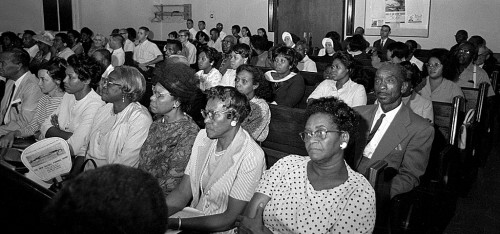 Kaplan went out of his way to assure the audience of about 100 that his organization does “not condone violence,” and stresses at all times the “peaceful and legal pursuit” of its objectives. He added that the NAACP has more than 500,000 members and represents 90 per cent of the Negro population.
Kaplan went out of his way to assure the audience of about 100 that his organization does “not condone violence,” and stresses at all times the “peaceful and legal pursuit” of its objectives. He added that the NAACP has more than 500,000 members and represents 90 per cent of the Negro population.
Police present to “direct traffic”
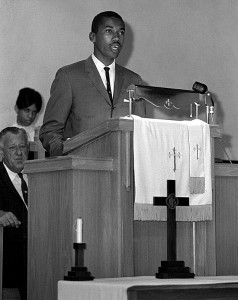 He said Black Power leaders and others who advocate violence as a means to acquire civil liberties represent “only a fraction of one per cent of the Negro people.”
He said Black Power leaders and others who advocate violence as a means to acquire civil liberties represent “only a fraction of one per cent of the Negro people.”
The city fathers may not have been as sure of that. The story went on to say that “About a dozen policemen were on hand at the church to direct the flow of traffic and presumably to halt any outbreak of disorder. No disturbance was reported, however.”
It was reported that there was applause at least two points and audible “amens” came from the crowd occasionally.
Kaplan was welcomed to the city by Mayor J. Hugh Logan, who expressed his interest in Mr. Kaplan’s address.
Kaplan implies local firms show bias
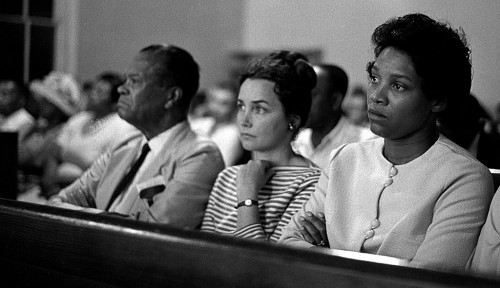 Cape school integrated early and peacefully. Classmate Gerald Love said at the reunion last summer, “There was no friction with the kids. There might have been some adults with problems, but not the kids.” It’s worth going back to read Gerald Love’s story, though, of his introduction to racism in Cape.
Cape school integrated early and peacefully. Classmate Gerald Love said at the reunion last summer, “There was no friction with the kids. There might have been some adults with problems, but not the kids.” It’s worth going back to read Gerald Love’s story, though, of his introduction to racism in Cape.
Kaplan said he had been told that of the 400 persons employed by Marquette Cement Mfg. Co., only five are Negroes; out of 240 employees of Missouri Utilities, only four are Negroes. At Southwestern Bell Telephone Co., there is only one Negro out of a total of 200 employees.
Photo gallery of NAACP meeting
Click on any photo to make it larger, then click on the left or right side of the image to move through the gallery.

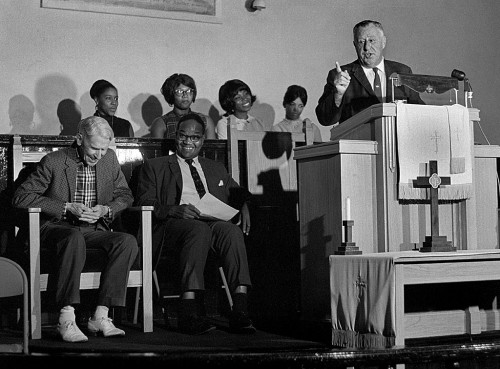
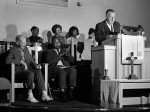
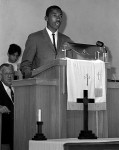
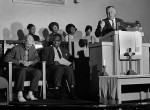





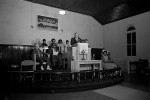
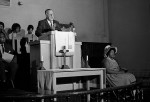

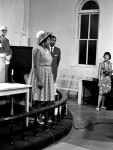
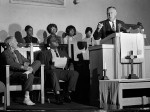


The correct name of the person in the Top photo and member of the junior choir is Ruth Wilson. Also, thanks for the photo of Diane Mitchell who passed away last month in IL. Brings back good memories.
Ron Bedell
Thanks for letting me know. I’ll update the info. It’s funny, because I typed Wilson, then looked at the cutline in The Missourian, which had it as Watson, and I changed it.
We’ll go back to Wilson.
As youth, many of us don’t actually “hear” most of what our parents say to us, but I will never forget the day my mother voiced her opinion about integration to me. She said, “The best thing that ever happened to Cape Girardeau was the day the black high school burned to the ground.”
To continue…..I am happy we had integrated schools. We would have missed knowing many wonderful people like Ruth, Gerald, Ronnie, Billy, Walter, Janette, and etc. The flute trio would have been a duo without Ruth; the talent show would not have had a standing ovation without Billy; my math homework would not have been as complete without Walter; my husband needed Gerald’s help with those guided missiles; and I would have missed the grace and beauty of Janette. Yes, after a fire the landscape soon takes on new beauty.
I think Sally’s mother was right. I’ve often wondered how long it would have taken for Cape to integrate the schools if the John Cobb School, which housed both the elementary and the high school grades, had still been in use. A few years ago, when I investigated the events in Cape during the 1953-54 period, I discovered that the Cape civic leaders knew that Brown vs. Board of Ed. was going through the courts, so they decided to delay any decision on re-building John Cobb until after they learned what the Supreme Court ruling would be.
I touched on that a little bit when I wrote about Jefferson School.
Good to hear from Ronnie Bedell these days…Ruth Wilson is stil beautiful these days! Rev Ben Cleaver was member of my church when I was growing up, The First Christian on West End Blvd. He was active in the church and active in the community with causes like this and the prayer day that ALL the ministers in town did every year. Rev. Cleaver used to drag me, with my parents permission, to help. Now I realize that I was the strong legs and weak mind he needed to continue his “work for the Lord”. These were his words “work for the Lord”, these words were big and powerful things in his life. These words guided him, truly a man on a mission and a nice person to boot! I do hope some of the time spent with Rev. Cleaver rubbed off on me.
As for the rebuilding of the burnt school…Burton Gerdhardt gave a bid for $150,000 for rebuilding it. The city fathers’ were a gasp, $150,000 for school! The good Dutch (German) thriftiness kicked in and said
“Heck for that kind of money they ALL can go to school together!” and we all did. That is the TRUE story…
That gracious white haired man was my great grandfather, a truly noble Great Soul. His daughter, my grandmother, was Ronald Reagan’s high school sweetheart, and was engaged to him before he went to Dark Side with Nancy Davis. In ’95 I met someone who had gone to school with my grandmother and Ronald. He reported he had been at a church social where he overheard my great grandmother, Mable, speaking about Ronald Reagan, ‘He’ll never amount to anything’. soon afterwards the engaement was off, and Mugs (my grandmother went off to France,w here she met my actual grandfather. (Phew!!) As my uncle Shelley, editor of the Richmond Tribune, commented, ‘She [Mabel] was so right!’ My memories are very clear of my great grandfather. Specifically, re; 60’s social climate ‘It’s very exciting and important what these young people are doing now.’ I thank him for the amazing legacy he left us. Clearly he was a valued and valuable member in his communities. I am so glad I found this.
That’s a great Ronald Reagan story. Thanks for sharing.
When I was “young and foolish,” as George W. Bush would say, I was smitten by Reagan, too. Here’s an account of covering him in 1964 when he was stumping for Barry Goldwater.